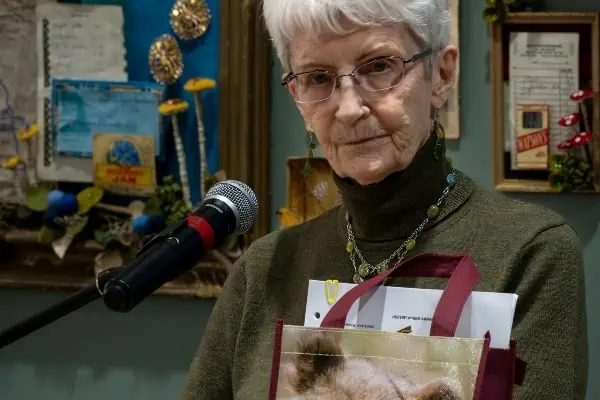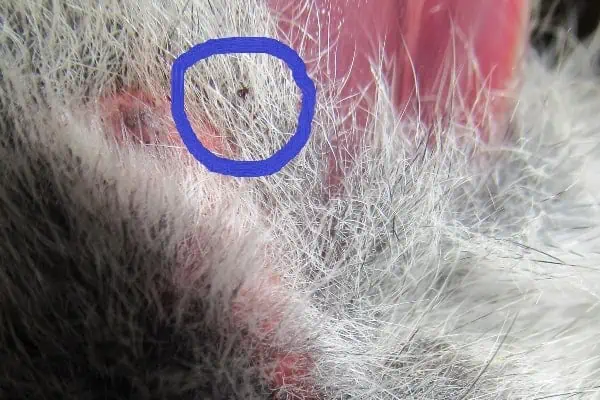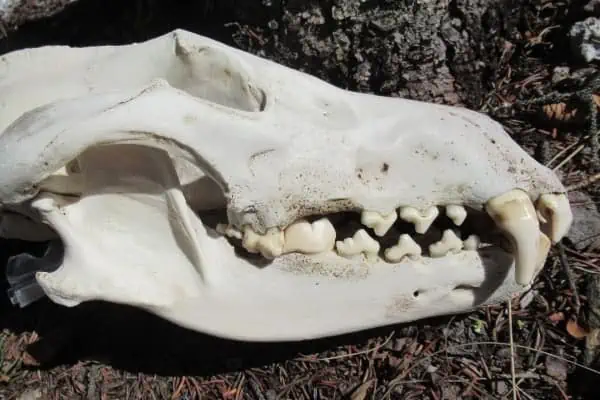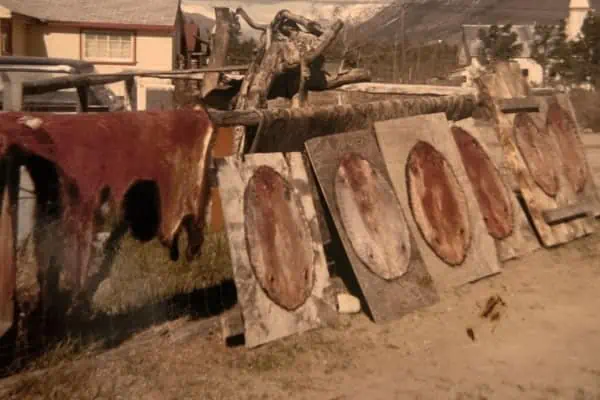Five years ago, textile artist and jewelry designer Vanessa Ægirsdóttir was ready for change. She had spent several months in Iceland, where she found a deep affinity with the place and its culture. She was set to leave the Yukon, emigrate to Iceland and start a new life.
“And then I met a guy,” Ægirsdóttir says.
The guy is George Bahm, who operates a family trapline on the South Canol in the winter. Ægirsdóttir corresponded with him while she was in Iceland and upon returning, she invited him to an exhibit opening she had at the cafe, Baked, in May 2017. They’ve been together ever since. Meeting Bahm set her on a whole new personal journey, as well as a professional path which is informed by his Tlingit heritage and his traditional approach to trapping.
The idea of incorporating Bahm’s fur products into her jewelry design was born when Ægirsdóttir was participating in the Great Northern Arts Festival in Inuvik. One late night under the midnight sun, Ægirsdóttir realized the creative and aesthetic potential for leaving the fur on the leather she used in her designs.
Inspired by this epiphany, she immediately texted Bahm and asked to buy all the fur he had on hand. Ægirsdóttir started integrating fur into her jewelry and introduced the new products at a few pop-ups at The Claim in Whitehorse.
“They were so popular,” Ægirsdóttir says. “I sold so much jewellery. It was crazy.”
Buoyed by the success of the pop-ups, Ægirsdóttir decided to open a boutique when the smallest space in Horwoods Mall became available in 2018. She remained there until a slightly larger one opened up next to Baked. In this shop, Ægirsdóttir creates much of her work, sells her products, and talks with visitors about the ethical, sustainable harvest of furs.
She sees the space as a place for engaging with people and having conversations about the fur industry, especially as it relates to Indigenous fur harvesters.
“I can speak to the cultural elements of my husband’s fur practice and how as an extension of that, I enact a lot of those same practices in how I use the fur, how I speak about the fur, in the kinds of items that I’m making, the furs that I can and can’t use,” Ægirsdóttir says. “All of those different things are from teachings that I’ve been given from him and some of his Elders. That’s how I can honour my own place in the greater story of the local context without overstepping.”
Ægirsdóttir explains that “storytelling is the cornerstone of what we do.” She sees much of her work is educating people. When she found that there were questions she couldn’t answer, she started going out on the trapline with Bahm. At first, she went to observe; now, she’s learned to assist her husband.
“I don’t love being out in 40 below, I don’t love being on a snowmobile, I don’t love getting stuck on the snowmobile,” Ægirsdóttir admits. However, she says that she and Bahm feel the closest when they are on the trapline and in the skinning shed, where the couple treat the animals with great respect.
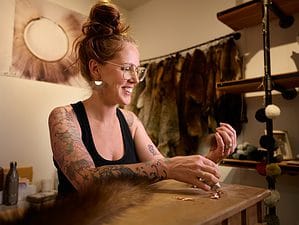
This idea carries forward into Ægirsdóttir’s use of fur in her products. One of the values that she practices is using as much of the animal as possible; for example, she creates pom pom earrings from leg fur, which goes to waste in the commercial fur industry. The leg fur has imperfections which Ægirsdóttir says add to the pom poms’ appeal for customers.
“The more irregular, the more popular they are,” she says.
In the boutique, the jewelry is arranged by type of animal: beaver, fox, wolverine, marten, muskrat and lynx. When shoppers are having a hard time deciding which to choose, Ægirsdóttir suggests that they think of the qualities of the animals. Does the customer identify with the industriousness of the semi-aquatic mammals? The playfulness of the fox? The ferocity of the wolverine?
“Whether it’s to amplify what [quality] they have or cultivate more of it, I think both have their place,” she says.
Ægirsdóttir also seeks to instill in her customers the same respect for the animal that she and Bahm practice on the trapline, in the skin shed, and in the making of the products.
“When you wear fur, you are forever in relationship with that animal,” Ægirsdóttir says..
“[Bahm’s] perspective on trapping and the life that it costs is that it’s not taken, it’s given,” she says. “These animals are giving themselves to us and so we have to honour them by being mindful of the value of that gift when we wear the fur.”
In addition to her own business, Ægirsdóttir partnered with Bahm to establish Wild Yukon Furs. Their goal is to purchase furs at a premium price and resell them locally. This circumvents the auction house model, which provides a low return to trappers.
Ægirsdóttir is also working with the International Fur Federation and the Fur Council of Canada who have an traceability labelling campaign called Furmark. However, it only applies to furs sold at auction. Ægirsdóttir and Bahm would like to see a similar program for trappers who create their own finished goods, and for people like Ægirsdóttir who buy directly from the trapper.
She sees this model as “putting power back into the trappers, particularly the Indigenous trappers. That’s what I want to see happen.”
At the same time that Ægirsdóttir is advocating for a sustainable livelihood for Indigenous trappers, she is also flourishing as an artist. And while COVID-19 temporarily derailed her, she’s also found joy in the recognition she’s receiving as an artist and entrepreneur.
Last summer, Ægirsdóttir won a Design and Innovation Award from the Craft Council of B.C. (CCBC). She almost abandoned the application, but her perseverance was rewarded.
“That was really well-timed, super good news when I was feeling everything was doomed to fail,” she says of receiving the award during a pandemic.
And things continue to look up for Ægirsdóttir, especially in her efforts to have her work recognized internationally. A dream came true when her work was featured in Vogue Japan.
“That was like the pinnacle of success,” Ægirsdóttir says. “I had made this rule for myself that if I ever get published in Vogue, I can do whatever I want…I can pursue any crazy idea I have.”
One such idea is a “matchmaker” project she is participating in to reach international markets. Artists submit their work for consideration by stores around the world, and the store swipes right or left to accept or reject, just like the dating app Tinder. Ægirsdóttir has been selected to have her work featured in a store in New York City and another in the French Riviera in Switzerland.
“These are the risks that I wouldn’t have taken were it not for that [CCBC] award giving me that validation, and the craziness of COVID lighting a fire.”
However far away her designs end up, here in the Yukon Ægirsdóttir is determined to champion a sustainable fur industry for Indigenous trappers while running a successful business. One way she imagines doing this is by expanding production.
“We want to scale it so that more trappers can trap and be paid fairly for their furs and so we can hire people to produce the product … That’s the hope, that’s the big dream.”
It seems like a dream within reach, thanks to Ægirsdóttir’s determination and willingness to take risks. And Bahm is her partner in all that she does.
“He’s so encouraging, and he sees the impact that doing this stuff has on me. He gets to pop by [the boutique]…and he sees me having conversations with people and I know he loves seeing those exchanges and how people feel about their experiences in here and what they’re learning and what they’re buying.”
With Bahm by her side, Ægirsdóttir has created a unique experience for visitors to her boutique. She says that some customers say they feel they’ve been transported to another world.
“This is like a little magical place.”

